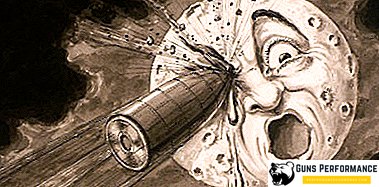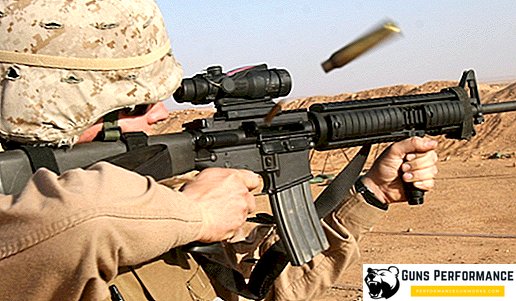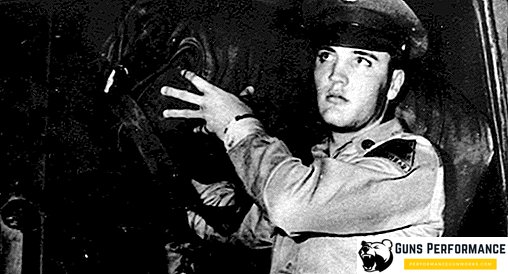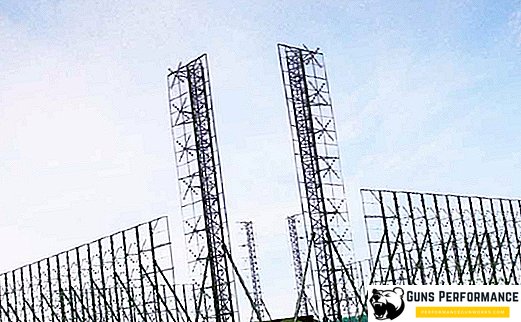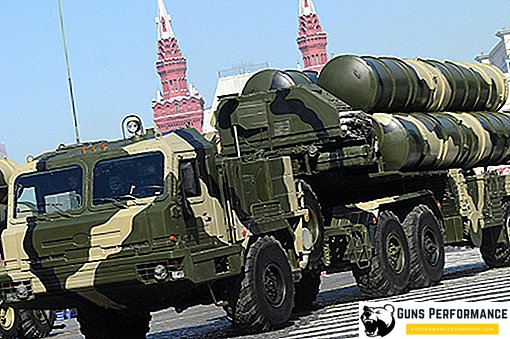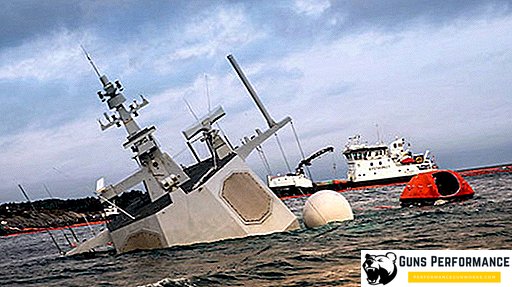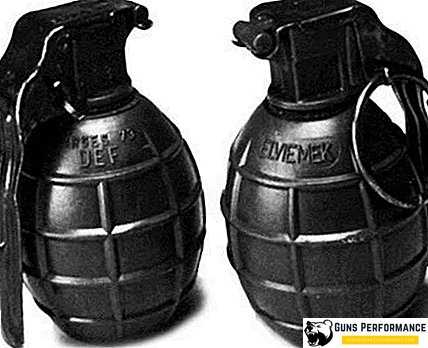The emergence of such powerful weapons as a nuclear bomb, was the result of the interaction of global factors of an objective and subjective nature. Objectively, its creation was caused by the rapid development of science, which began with the fundamental discoveries of physics in the first half of the twentieth century. The strongest subjective factor was the military-political situation of the 40s, when the countries of the anti-Hitler coalition — the United States, Great Britain, and the USSR — tried to outrun each other in the development of nuclear weapons.
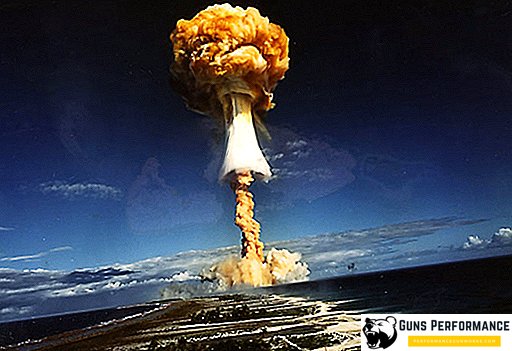
Prerequisites for the creation of a nuclear bomb
The starting point of the scientific path to the creation of atomic weapons was the year 1896, when the French chemist A. Becquerel discovered the radioactivity of uranium. It was the chain reaction of this element that formed the basis for the development of a terrible weapon.

At the end of XIX and in the first decades of the twentieth century, scientists discovered alpha, beta, gamma rays, discovered many radioactive isotopes of chemical elements, the law of radioactive decay, and initiated the study of nuclear isometry. In the 1930s, a neutron and a positron became known, and also the nucleus of a uranium atom was first split with absorption of neutrons. This was the impetus for the beginning of the creation of nuclear weapons. He was the first to invent and, in 1939, the French physicist Frederic Joliot-Curie patented the design of a nuclear bomb.
As a result of further development, nuclear weapons have become a historically unprecedented military-political and strategic phenomenon capable of ensuring the national security of the possessor state and minimizing the capabilities of all other weapons systems.

Nuclear bomb device
The design of the atomic bomb consists of a number of different components, among which there are two main ones:
- body,
- automation system.
Automation along with nuclear charge is located in the case, which protects them from various influences (mechanical, thermal, etc.). The automation system controls the explosion to occur at a fixed time. It consists of the following elements:
- emergency blasting;
- protection and cocking device;
- power supply;
- charge detection sensors.
Delivery of atomic charges is carried out with the help of aviation, ballistic and cruise missiles. At the same time, nuclear weapons can be a part of a mine, torpedoes, bombs, etc.

Systems for detonating nuclear bombs are different. The simplest is the injection device, in which the impetus for the explosion is hitting the target and the subsequent formation of a supercritical mass.
Another characteristic of atomic weapons is the size of the caliber: small, medium, large. Most often, the power of the explosion is characterized in TNT equivalent. A small caliber of nuclear weapons implies a charge capacity of several thousand tons of TNT. The average caliber is already equal to tens of thousands of tons of trotyl, the largest is measured in millions.

Operating principle
The atomic bomb scheme is based on the principle of using nuclear energy released during a nuclear chain reaction. This is the process of dividing heavy or synthesizing light nuclei. Due to the release of a huge amount of intranuclear energy in the shortest period of time, a nuclear bomb belongs to weapons of mass destruction.
During this process, there are two key places:
- the center of a nuclear explosion, in which the process itself takes place;
- the epicenter, which is the projection of this process on the surface (earth or water).
In a nuclear explosion, such an amount of energy is released that, when projected onto the earth, causes seismic shocks. The range of their distribution is very large, but significant damage to the environment is applied at a distance of only a few hundred meters.

Damage factors
Atomic weapons have several types of damage:
- light emission
- radioactive contamination
- shock wave
- penetrating radiation
- electromagnetic pulse.
A nuclear explosion is accompanied by a bright flash, which is formed due to the release of a large amount of light and heat energy. The power of this flash is many times higher than the power of the sun's rays, so the danger of being hit by light and heat spreads over several kilometers.

Another very dangerous factor of exposure to a nuclear bomb is the radiation produced by an explosion. It acts only the first 60 seconds, but has the maximum penetrating power.
The shock wave has great power and a significant destructive effect, therefore, in a matter of seconds, it causes tremendous harm to people, equipment, and buildings.
Penetrating radiation is dangerous to living organisms and is the cause of the development of radiation sickness in humans. Electromagnetic pulse affects only the technique.
All these types of lesions in the aggregate make the atomic bomb a very dangerous weapon.
The first tests of a nuclear bomb
The United States was the first to show the greatest interest in atomic weapons. At the end of 1941 huge funds and resources were allocated in the country for the development of nuclear weapons. The work resulted in the first tests of the atomic bomb with an explosive device "Gadget", which took place on July 16, 1945 in the US state of New Mexico.

For the US, the time has come to act. For the victorious end of the Second World War, it was decided to defeat an ally of Hitler's Germany - Japan. At the Pentagon, targets were chosen for the first nuclear strikes, at which the US wanted to demonstrate how powerful weapons they possess.
On August 6 of the same year, the first atomic bomb under the name "Kid" was dropped on the Japanese city of Hiroshima, and on August 9, a bomb named "Fat Man" fell on Nagasaki.

The hit in Hiroshima was considered ideal: the nuclear device exploded at an altitude of 200 meters. The blast wave overturned the stoves in the houses of the Japanese, heated by coal. This has led to numerous fires even in urban areas remote from the epicenter.
The initial flash was followed by a blow of the heat wave, which lasted a second, but its power, covering a radius of 4 km, melted tile and quartz in granite slabs, and incinerated telegraph poles. Following the heat wave came shock. The wind speed was 800 km / h, and his gust blew almost everything in the city. Of the 76 thousand buildings, 70 thousand were completely destroyed.

A few minutes later a strange rain of large drops of black color began to fall. It was caused by condensate formed in the colder layers of the atmosphere from steam and ash.
People who fell under the fireball at a distance of 800 meters were burned and turned into dust. Some burnt skin was ripped off by a shock wave. Drops of black radioactive rain left incurable burns.
Survivors fell ill with a previously unknown disease. They began to nausea, vomiting, fever, bouts of weakness. In the blood, the level of white cells fell sharply. These were the first signs of radiation sickness.
Three days after the bombing of Hiroshima, a bomb was dropped on Nagasaki. She had the same power and caused similar effects.
Two atomic bombs killed hundreds of thousands of people in seconds. The first city was practically wiped out by the shock wave from the face of the earth. More than half of civilians (about 240 thousand people) died immediately from their wounds. Many people were exposed to radiation, which led to radiation sickness, cancer, infertility. In Nagasaki, in the first days, 73 thousand people were killed, and after some time, 35 thousand more people died in agony.
Video: nuclear bomb tests
Tests RDS-37
Creating an atomic bomb in Russia
The consequences of the bombing and the history of the inhabitants of Japanese cities shocked I. Stalin. It became clear that the creation of its own nuclear weapons is a matter of national security. On August 20, 1945, an atomic energy committee began its work in Russia, headed by L. Beria.

Studies in nuclear physics have been conducted in the USSR since 1918. In 1938, an atomic nucleus commission was established at the Academy of Sciences. But with the beginning of the war almost all work in this direction was suspended.
In 1943, Soviet intelligence officers transferred from England closed scientific works on atomic energy, from which it followed that the creation of an atomic bomb in the West had advanced far ahead. At the same time, reliable agents were deployed in several US nuclear research centers in the United States. They transmitted information on an atomic bomb to Soviet scientists.
The technical task for the development of two variants of the atomic bomb was made by their creator and one of the scientific leaders Y. Khariton. In accordance with it, it was planned to create an RDS ("special jet engine") with index 1 and 2:
- RDS-1 - a bomb with a charge of plutonium, which was supposed to be undermined by spherical compression. His device passed the Russian intelligence.
- RDS-2 is a cannon bomb with two parts of a uranium charge, which should come together in the barrel of the cannon to create a critical mass.
In the history of the famous RDS, the most common decoding - "Russia makes itself" - was invented by the deputy Y. Khariton on scientific work K. Schelkin. These words very accurately convey the essence of the works.

Information that the USSR had mastered the secrets of nuclear weapons caused a rush in the United States to the early start of a pre-emptive war. In July 1949, the Troyan plan appeared, according to which the fighting was planned to begin on January 1, 1950. Then the date of the attack was postponed to January 1, 1957, with the condition that all NATO countries enter the war.
Information obtained through intelligence channels, hastened the work of Soviet scientists. According to Western experts, Soviet nuclear weapons could have been created not earlier than 1954-1955. However, the test of the first atomic bomb occurred in the USSR at the end of August 1949.
On August 29, 1949, the RDS-1 nuclear device, the first Soviet atomic bomb, invented by a team of scientists headed by I. Kurchatov and Yu. Khariton, was destroyed at the test site in Semipalatinsk. The explosion had a power of 22 Kt. The design of the charge imitated the American "Fat Man", and the electronic filling was created by Soviet scientists.
The Troyan plan, according to which the Americans were going to drop atomic bombs on 70 cities of the USSR, was thwarted because of the likelihood of a retaliatory strike. The event at the Semipalatinsk test site informed the world that the Soviet atomic bomb had put an end to the American monopoly on owning a new weapon. This invention completely destroyed the militaristic plan of the USA and NATO and prevented the development of the Third World War. A new story has begun - an era of world peace that exists under the threat of total annihilation.

"Nuclear Club" of the world
Nuclear club - the symbol of several states that own nuclear weapons. Today, such weapons are:
- in the USA (since 1945)
- in Russia (originally USSR, since 1949)
- in the UK (since 1952)
- in France (since 1960)
- in China (since 1964)
- in India (since 1974)
- in Pakistan (since 1998)
- in the DPRK (since 2006)
Israel is also considered to have nuclear weapons, although the country's leadership does not comment on their presence. In addition, on the territory of the NATO member states (Germany, Italy, Turkey, Belgium, the Netherlands, Canada) and the allies (Japan, South Korea, despite an official refusal) are deployed US nuclear weapons.

Kazakhstan, Ukraine, Belarus, which owned a part of nuclear weapons after the collapse of the USSR, in the 90s transferred it to Russia, which became the sole heir to the Soviet nuclear arsenal.
Atomic (nuclear) weapons are the most powerful instrument of global politics, which has firmly entered the arsenal of relations between states. On the one hand, it is an effective deterrent, on the other hand, it is a weighty argument for preventing military conflict and strengthening peace between the powers that own these weapons. It is a symbol of a whole epoch in the history of mankind and international relations, which must be treated very reasonably.


